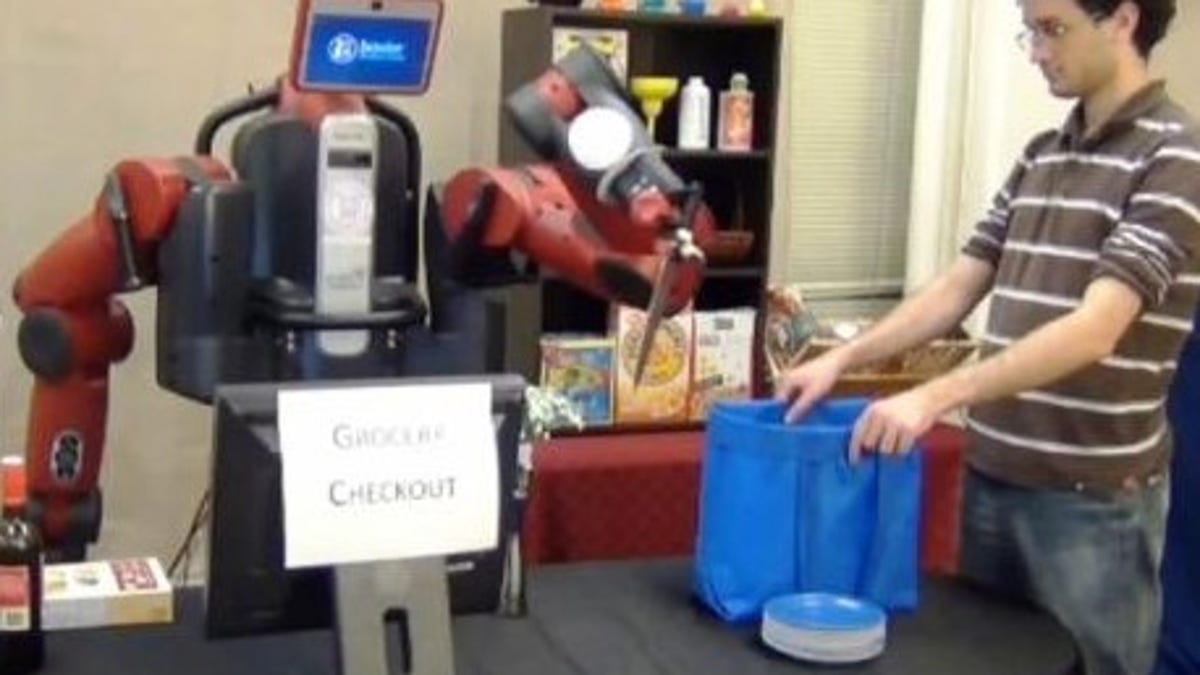Get ready for knife-wielding robot grocery clerks
Baxter's learning algorithm teaches the bot not to be menacing. It can apply that knowledge to new situations, like hopefully not stabbing customers.

I've said before that certain experiments are a veritable cri de coeur for an Ig Nobel prize, the awards that honor silly but thoughtful science.
Well, Cornell University graduate student Ashesh Jain and colleagues should be in the running for their bold attempts to teach robotic grocery store clerks of the future how to handle knives so they don't terrify human customers.
Their study, "Learning Trajectory Preferences for Manipulators via Iterative Improvement," sounds innocuous enough until you see the humanoid robot with a large blade in its gripper. This takes robot-knife experiments to a new level.
Rethink Robotics' Baxter assembly robot was designed to work in close quarters with humans, but as seen in the demo below, its knife gets a little too close for comfort.
The researchers tried to teach Baxter how to handle knives while working as a checkout clerk in a mock grocery store, and no one was eviscerated.
As the robot considered various ways of holding the knife while it was being checked out at the cash, researchers manually guided it through the process, showing it how to keep the blade away from them.
The machine presented a number of possible ways to move the knife that users can choose from. Remarkably, it didn't suggest a rapid stabbing motion.
In fact, it learns to handle the knife safely in only three iterations of "corrective feedback" from the user in the experiment. It can also apply this learning algorithm to new situations, for instance handling eggs more delicately than a cereal box.
That would be a necessary skill to know if a robot like Baxter ever works as a chef in a restaurant or home, according to the researchers.
"We give the robot a lot of flexibility in learning," Ashutosh Saxena, a Cornell assistant professor of computer science, said in a release.
"The robot can learn from corrective human feedback in order to plan its actions that are suitable to the environment and the objects present."
The research is to be presented at a Neural Information Processing Systems conference next month. Check out the demo in the vid below.

